
The Enchanting Bucegi Mountains of Romania
Discover the mystical Bucegi Mountains in Romania, where natural beauty, rich culture, and thrilling adventures await. Explore iconic landmarks, historic monasteries, and local cuisine.
Nestled in the heart of Romania, the Bucegi Mountains are a haven for nature lovers and adventure seekers alike. Part of the Southern Carpathians, these mountains offer a breathtaking blend of lush forests, dramatic cliffs, and serene alpine meadows. Whether you are looking to hike, climb, or simply take in the beautiful scenery, the Bucegi Mountains provide a diverse range of activities for all types of travelers. One of the most iconic features of the Bucegi Mountains is the Sphinx, a natural rock formation that resembles the Great Sphinx of Giza. This mysterious landmark is believed to have spiritual significance and attracts visitors from all over the world. Nearby, you can also find the Babele rock formations, which are equally intriguing and add to the mystical allure of the region. For those interested in history and culture, the Bucegi Mountains do not disappoint. The area is home to several ancient monasteries, including the famous Caraiman Monastery, which offers stunning views and a peaceful retreat from the hustle and bustle of daily life. Additionally, the region is rich in folklore, with many local legends and myths waiting to be discovered. Outdoor enthusiasts will find plenty to keep them busy in the Bucegi Mountains. The area boasts numerous hiking and biking trails, ranging from easy walks to challenging climbs. In the winter months, the mountains transform into a snowy paradise, perfect for skiing and snowboarding. For a unique experience, consider taking the Bucegi Plateau cable car, which offers panoramic views of the surrounding landscape. No trip to the Bucegi Mountains would be complete without sampling the local cuisine. Traditional Romanian dishes such as sarmale (cabbage rolls) and mici (grilled sausages) can be found in the mountain villages, providing a delicious taste of the region's culinary heritage. With its stunning natural beauty, rich cultural history, and array of activities, the Bucegi Mountains are a must-visit destination for any traveler exploring Romania.
Local tips in Bucegi Mountains
- Wear sturdy hiking boots; trails can be rocky and uneven.
- Visit the Sphinx and Babele early in the morning to avoid crowds.
- Carry cash, as some remote areas may not accept credit cards.
- Check weather conditions before heading out; the weather can change quickly.
- Sample local dishes at mountain village restaurants for an authentic experience.
- Take the Bucegi Plateau cable car for breathtaking views.
The Enchanting Bucegi Mountains of Romania
Nestled in the heart of Romania, the Bucegi Mountains are a haven for nature lovers and adventure seekers alike. Part of the Southern Carpathians, these mountains offer a breathtaking blend of lush forests, dramatic cliffs, and serene alpine meadows. Whether you are looking to hike, climb, or simply take in the beautiful scenery, the Bucegi Mountains provide a diverse range of activities for all types of travelers. One of the most iconic features of the Bucegi Mountains is the Sphinx, a natural rock formation that resembles the Great Sphinx of Giza. This mysterious landmark is believed to have spiritual significance and attracts visitors from all over the world. Nearby, you can also find the Babele rock formations, which are equally intriguing and add to the mystical allure of the region. For those interested in history and culture, the Bucegi Mountains do not disappoint. The area is home to several ancient monasteries, including the famous Caraiman Monastery, which offers stunning views and a peaceful retreat from the hustle and bustle of daily life. Additionally, the region is rich in folklore, with many local legends and myths waiting to be discovered. Outdoor enthusiasts will find plenty to keep them busy in the Bucegi Mountains. The area boasts numerous hiking and biking trails, ranging from easy walks to challenging climbs. In the winter months, the mountains transform into a snowy paradise, perfect for skiing and snowboarding. For a unique experience, consider taking the Bucegi Plateau cable car, which offers panoramic views of the surrounding landscape. No trip to the Bucegi Mountains would be complete without sampling the local cuisine. Traditional Romanian dishes such as sarmale (cabbage rolls) and mici (grilled sausages) can be found in the mountain villages, providing a delicious taste of the region's culinary heritage. With its stunning natural beauty, rich cultural history, and array of activities, the Bucegi Mountains are a must-visit destination for any traveler exploring Romania.
When is the best time to go to Bucegi Mountains?
Iconic landmarks you can’t miss
Sphinx
Discover the enchanting Sphinx of Romania, a breathtaking natural monument offering stunning views and rich legends in the heart of the Bucegi Mountains.

Heroes' Cross on Caraiman Peak
Explore the Heroes' Cross on Caraiman Peak: A breathtaking monument honoring bravery with stunning views of the Carpathians.

Babele Natural Monument
Explore the enchanting Babele Natural Monument in the Romanian Carpathians, where stunning rock formations meet breathtaking landscapes.

Traseu Peștera - Sfinx
Explore the breathtaking Traseu Peștera - Sfinx, a hiking paradise in Romania, boasting stunning rock formations and scenic mountain trails for all adventurers.

Unmissable attractions to see
The Casino of Sinaia
Discover the elegance of The Casino of Sinaia, a historic landmark blending luxurious gaming with breathtaking mountain views in Romania.
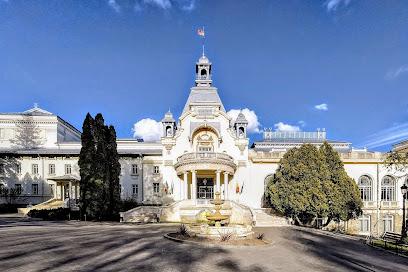
Cheia Monastery
Explore the serene Cheia Monastery, a captivating blend of spirituality and nature in Romania's breathtaking landscapes.

Babele Natural Monument
Explore the enchanting Babele Natural Monument in Moroeni, Romania, where nature's artistry meets breathtaking mountain vistas.

Foamy Valley Waterfall
Explore the stunning Foamy Valley Waterfall in Romania, a breathtaking natural wonder surrounded by lush landscapes and serene beauty.

Transbucegi
Explore the stunning landscapes and diverse wildlife of Transbucegi, Romania's breathtaking alpine region, perfect for adventure and relaxation.

Cezar Petrescu Memorial Museum
Discover the literary legacy of Cezar Petrescu at his memorial museum in Bușteni, a must-visit for culture and literature lovers.

Poiana Stânei
Explore the breathtaking landscapes of Poiana Stânei, a hiking paradise in the Carpathian Mountains, perfect for nature lovers and outdoor enthusiasts.

The Museum of Bucegi Nature Preserve
Explore the natural wonders of Romania at the Museum of Bucegi Nature Preserve in Sinaia, where biodiversity and education come together.

Plaiul lui Păcală
Explore the stunning landscapes, rich folklore, and warm hospitality of Plaiul lui Păcală, a hidden gem in the heart of Romania's Carpathian Mountains.

Podu' cu Florile
Discover the breathtaking hiking trails and stunning landscapes of Podu' cu Florile, a natural paradise in Romania perfect for all adventure seekers.

Varful Caraiman (Caraiman Peak)
Discover the breathtaking beauty of Caraiman Peak in Bucegi Natural Park, where adventure meets stunning landscapes and rich history.

Cascada Ialomiței
Discover the breathtaking beauty of Cascada Ialomiței, a stunning waterfall in Romania's picturesque landscape surrounded by nature's tranquility.

Valea Horoabei
Discover the breathtaking landscapes and serene beauty of Valea Horoabei in the Bucegi Mountains, a must-visit destination for nature lovers and adventurers.

Poiana Izvoarelor
Explore the breathtaking landscapes of Poiana Izvoarelor, a premier hiking destination in Bușteni, Romania, perfect for nature lovers and families alike.

Brâna Mare
Explore the breathtaking beauty of Brâna Mare, a stunning tourist attraction in the Carpathian Mountains offering unforgettable hiking experiences and breathtaking views.
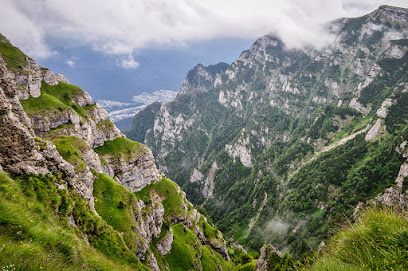
Essential places to dine
Dragului
Experience authentic Romanian cuisine at Dragului in Predeal—where exquisite flavors meet breathtaking mountain views.

Ancuta's House
Savor authentic Romanian cuisine at Ancuta's House in Bușteni – a delightful culinary escape amidst stunning mountain views.

Snow Restaurant
Discover Snow Restaurant: A culinary haven in Sinaia offering delicious local cuisine amidst breathtaking mountain views.

Kuib
Discover authentic Romanian flavors at Kuib in Sinaia – where tradition meets taste amidst stunning mountain views.
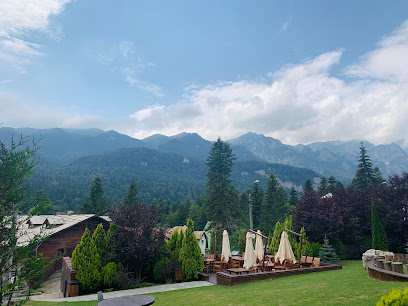
Cabana Schiori
Discover authentic Romanian cuisine amidst stunning mountain views at Cabana Schiori in Sinaia.
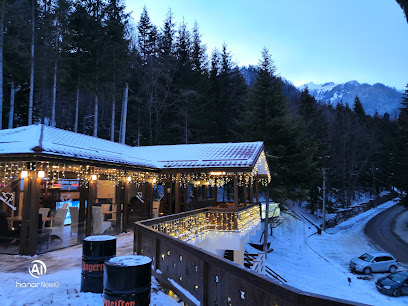
Casa Magica
Discover comfort and tradition at Casa Magica in Bușteni - your gateway to Romania's breathtaking Carpathian Mountains.

Restaurant Bucegi
Discover authentic Romanian cuisine amidst stunning mountain views at Restaurant Bucegi in Sinaia.

Restaurant WooD
Experience authentic Romanian flavors at Restaurant WooD in Sinaia - where culinary excellence meets stunning mountain views.

Pensiunea Alex
Experience authentic Romanian cuisine at Pensiunea Alex in Sinaia - where tradition meets flavor amidst stunning mountain views.

La etaj
Discover authentic Romanian cuisine at La etaj in Bușteni – where every dish tells a story.

Restaurant Gura Diham
Discover authentic Romanian flavors at Restaurant Gura Diham, where nature meets culinary excellence in a serene setting.
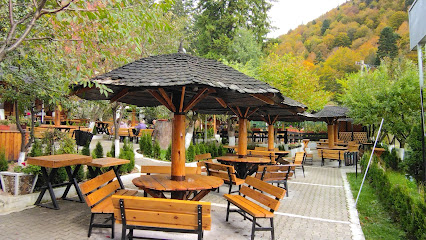
Restaurant Irish House(Pizzerie)
Discover the rich flavors of Romania at Restaurant Irish House in Bușteni—where tradition meets taste in every dish.

La Ceaunu' Crapat
Experience authentic Romanian cuisine at La Ceaunu' Crapat in Sinaia - where tradition meets taste.
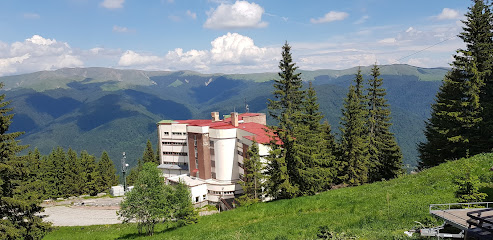
Popas Poiana
Discover authentic Romanian flavors at Popas Poiana in Bușteni – a must-visit culinary gem amidst stunning mountain scenery.
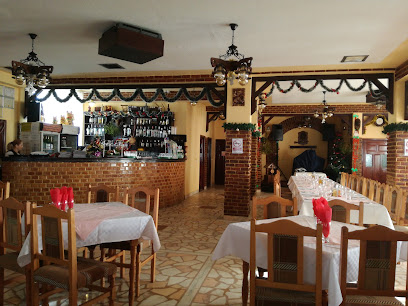
LA ROQ Restaurant Sinaia
Experience contemporary Romanian cuisine amidst stunning mountain views at LA ROQ Restaurant in Sinaia.

Markets, malls and hidden boutiques
PENNY
Explore the vibrant offerings of PENNY supermarket in Bușteni, where fresh food and local flavors come together for all your shopping needs.

Mega Image
Discover local flavors and essentials at Mega Image, a vibrant supermarket in Bușteni, perfect for all your shopping needs while exploring Romania.

Puma Store Busteni
Discover the Puma Store in Bușteni for stylish athletic footwear and apparel amidst the stunning Carpathian Mountains.
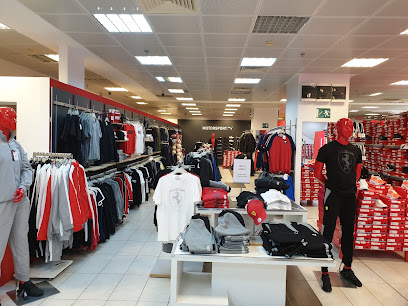
Quwwa Coffee Shop
Discover the perfect blend of comfort and flavor at Quwwa Coffee Shop, a must-visit destination in the heart of Bușteni.
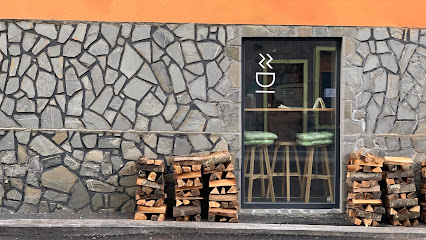
Magazin Alimentar
Explore the unique offerings of Magazin Alimentar, a boutique in Bușteni, where local delicacies and charming souvenirs await in Romania's stunning landscape.

Magazin Mixt(la' Lupoaica)
Explore the vibrant local culture at Magazin Mixt in Bușteni, where unique souvenirs and friendly service await every visitor.

Amintiri din Sinaia
Discover unique gifts and local treasures at Amintiri din Sinaia, a charming gift shop in the heart of Romania's beautiful Sinaia.

Artizanat Piatra Arsa
Discover unique fashion at Artizanat Piatra Arsa in Bușteni, where local craftsmanship meets stylish clothing for every taste.

La doi paşi
Discover La doi paşi, the essential convenience store in Bușteni, Romania, offering everything you need for your mountain adventures.

SH
Explore Bușteni's vibrant variety store, SH, for unique souvenirs and local crafts that capture the essence of this charming town.

Brugi
Explore Bușteni's finest clothing store, Brugi, offering trendy apparel and accessories for every adventure in the beautiful Carpathians.

Arsis
Explore Bușteni with confidence; visit Arsis for the latest cell phones and accessories tailored for every traveler.

Bucuria - bomboane si vinuri
Discover Bucuria - Bomboane si Vinuri in Bușteni: A Sweet Haven for Local Treats and Exquisite Wines.

MACOGRES ITALFLOR
Explore Macogres Italflor in Bușteni, a tile store where elegance meets craftsmanship, showcasing exquisite designs and local artistry.

I LOVE Busteni
Discover the floral beauty of Bușteni at I LOVE Busteni, where vibrant arrangements meet local charm in a captivating atmosphere.

Essential bars & hidden hideouts
Restaurant Bucegi
Experience authentic Romanian cuisine at Restaurant Bucegi in Sinaia, surrounded by the stunning Carpathian Mountains.

La etaj
Experience the delightful fusion of traditional and modern cuisine at La etaj, your go-to restaurant in scenic Bușteni.
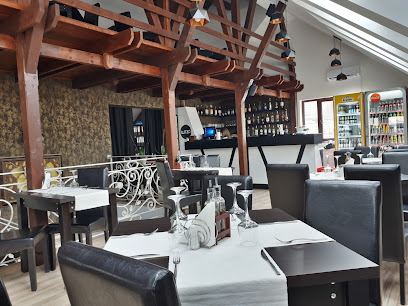
Restaurant Irish House(Pizzerie)
Discover the heart of Bușteni culinary scene at Restaurant Irish House—where traditional flavors meet a cozy atmosphere.

Nargila Grill & Pizza
Experience a culinary delight at Nargila Grill & Pizza in Sinaia, where local flavors meet international cuisine in a cozy atmosphere.

Restaurant Rustic - Hotel Caraiman
Experience authentic Romanian cuisine with stunning mountain views at Restaurant Rustic in Bușteni. Perfect for tourists seeking a cozy dining experience.

Bucegi Porțile Regatului
Discover the beauty of Bucegi Porțile Regatului: where health food meets stunning mountain views and recreational fun.
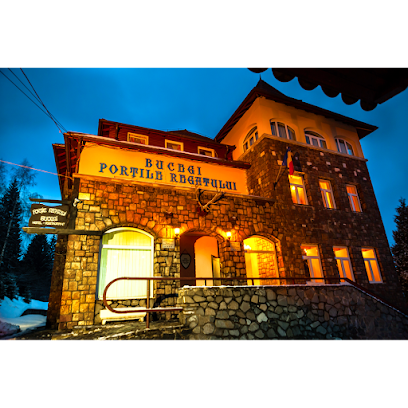
Bistro Floare de Iris
Discover authentic Romanian cuisine at Bistro Floare de Iris, a charming restaurant in Bușteni with breathtaking mountain views.

Bar 33
Experience the vibrant nightlife of Sinaia at Bar 33, where great drinks, friendly staff, and live music await in a cozy atmosphere.

Inside
Discover the heart of Bușteni at Inside, a cozy bar offering a delightful drink selection and a welcoming atmosphere for all visitors.

Old Cars Pub
Experience the charm of Old Cars Pub in Prahova, where vintage decor meets modern cuisine in a lively gastropub atmosphere.

Popasul Ursilor Bucegi
Experience the essence of Romanian barbecue at Popasul Ursilor Bucegi, nestled in the stunning Bucegi Mountains, perfect for food lovers and nature enthusiasts alike.
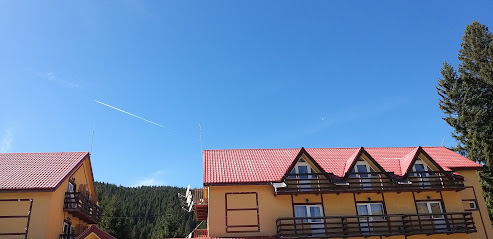
Terrace Yannis
Discover breathtaking views and exquisite local cuisine at Terrace Yannis in Bușteni, perfect for a relaxing day or a romantic evening.

ICONIC Lounge
Discover the vibrant atmosphere and exquisite drinks at ICONIC Lounge, a premier bar in the heart of Sinaia, Romania.

Clătite uriașe Padina
Experience the exquisite flavors of giant pancakes in a picturesque setting at Clătite Uriașe Padina, Peștera's top culinary destination.

Popasul Padina
Savor authentic Romanian flavors in a picturesque setting at Popasul Padina, a traditional restaurant in Peștera, Romania.

Local Phrases about Bucegi Mountains
-
- HelloSalut
[sah-loot] - GoodbyeLa revedere
[lah re-ve-de-re] - YesDa
[dah] - NoNu
[noo] - Please/You're welcomeTe rog / Cu plăcere
[te rohg / koo plah-che-re] - Thank youMulțumesc
[mool-tzoo-mesk] - Excuse me/SorryScuzați-mă / Regret
[skoo-za-tzoo mah / re-gret] - How are you?Ce faci?
[che fahch] - Fine. And you?Bine. Și tu?
[bee-neh. she too] - Do you speak English?Vorbești engleză?
[vor-besht eng-lezah] - I don't understandNu înțeleg
[noo in-tse-leg]
- HelloSalut
-
- I'd like to see the menu, pleaseAș dori să văd meniul, vă rog
[ash doh-ree sa vad me-nyool, vah rohg] - I don't eat meatNu mănânc carne
[noo muh-nuhnk kar-neh] - Cheers!Noroc!
[noh-rok] - I would like to pay, pleaseAș dori să plătesc, vă rog
[ash doh-ree sa plah-tesk, vah rohg]
- I'd like to see the menu, pleaseAș dori să văd meniul, vă rog
-
- Help!Ajutor!
[ah-yoo-tor] - Go away!Du-te!
[doo-teh] - Call the Police!Sună la Poliție!
[soo-nah lah po-leet-see-eh] - Call a doctor!Sună un doctor!
[soo-nah oon dok-tor] - I'm lostM-am pierdut
[mahm pyer-dooot] - I'm illSunt bolnav
[soont bohl-nav]
- Help!Ajutor!
-
- I'd like to buy...Aș dori să cumpăr...
[ash doh-ree sa koom-par] - I'm just lookingDoar mă uit
[doh-ar muh ooit] - How much is it?Cât costă?
[kaht kohs-tah] - That's too expensiveE prea scump
[eh pre-ah skoomp] - Can you lower the price?Puteți să scădeți prețul?
[poo-teh-tsi sa ska-detsee pre-tsool]
- I'd like to buy...Aș dori să cumpăr...
-
- What time is it?Cât este ora?
[kaht yehs-teh oh-rah] - It's one o'clockEste ora unu
[yes-teh oh-rah oon-oo] - Half past (10)Zece și jumătate
[zeh-che shee joo-muh-ta-teh] - MorningDimineața
[dee-mee-neh-tsa] - AfternoonDupă-amiază
[doo-pah ah-mee-ah-zah] - EveningSeara
[seh-ah-rah] - YesterdayIeri
[yehr] - TodayAstăzi
[ahs-tuhz] - TomorrowMâine
[muh-yneh] - 1Unu
[oon-oo] - 2Doi
[doy] - 3Trei
[tray] - 4Patru
[paht-roo] - 5Cinci
[cheen-chee] - 6Șase
[shah-seh] - 7Șapte
[shahp-teh] - 8Opt
[opt] - 9Nouă
[noo-uh] - 10Zece
[zeh-che]
- What time is it?Cât este ora?
-
- Where's a/the...?Unde este unul/una...?
[oon-deh yes-teh oon-ool/oo-nah] - What's the address?Care este adresa?
[cah-re yes-teh ah-dre-sah] - Can you show me (on the map)?Puteți să-mi arătați (pe hartă)?
[poo-teh-tsi sah-mi ah-ra-tsa-tsi (pe har-tah)] - When's the next (bus)?Când este următorul (autobuz)?
[kand yes-teh oor-muh-toh-rool (ow-to-booze)] - A ticket (to ....)Un bilet (spre ....)
[oon bee-let (spreh)]
- Where's a/the...?Unde este unul/una...?
History of Bucegi Mountains
-
The Bucegi Mountains are steeped in ancient history, with evidence suggesting that the Thracians, an ancient Indo-European people, once inhabited the region. Archaeological findings, such as ancient fortresses and relics, point to a thriving Thracian culture that existed around the first millennium BC. The Thracians were known for their intricate metalwork, pottery, and rich mythological traditions.
-
The Bucegi Mountains played a crucial role during the era of the Dacians, an ancient civilization that preceded Roman occupation. The Dacians constructed formidable fortresses within the mountains, using the natural terrain for defense against invaders. The most famous of these is the Sphinx, a natural rock formation that resembles a human face and is believed to have been a spiritual site for the Dacians.
-
In the early 2nd century AD, the Roman Empire, under Emperor Trajan, conquered the Dacians and integrated their territories into the province of Dacia. The Bucegi Mountains witnessed significant Roman military activity, with roads, forts, and settlements established to secure and exploit the region's resources. Roman influences can still be seen in the remnants of these ancient structures and roads.
-
During the medieval period, the Bucegi Mountains became a place of monastic retreat and spiritual refuge. Orthodox Christian monks established monasteries and hermitages in the secluded valleys and caves. These religious sites served as centers of learning and spirituality, preserving religious texts and traditions during turbulent times.
-
The Bucegi Mountains are rich with Romanian legends and folklore. The most famous is the tale of the Zalmoxian Cave, believed to be a sacred site where the Dacian god Zalmoxis retreated. Another popular legend speaks of the Caraiman Cross, a monumental cross erected to honor Romanian heroes of World War I, which stands as a symbol of bravery and resilience.
-
During World War II, the Bucegi Mountains held strategic importance due to their geographical location. The rugged terrain served as a natural barrier and a hideout for resistance fighters. The mountains also saw the construction of bunkers and fortifications, remnants of which can still be explored today.
-
In the 20th and 21st centuries, the Bucegi Mountains have become a popular destination for tourists and outdoor enthusiasts. The establishment of the Bucegi Natural Park in 2000 has helped preserve the region's natural beauty and biodiversity. Hiking trails, ski resorts, and historical tours attract visitors from around the world, eager to experience the mountains' rich history and stunning landscapes.
Bucegi Mountains Essentials
-
The Bucegi Mountains are located in central Romania, south of the city of Brașov. The nearest international airport is Henri Coandă International Airport in Bucharest, approximately 140 kilometers away. From Bucharest, you can take a train or a bus to Sinaia, Bușteni, or Predeal, which are the main gateway towns to the Bucegi Mountains. The train journey takes about 1.5 to 2 hours and offers picturesque views of the Romanian countryside.
-
Once you arrive in Sinaia, Bușteni, or Predeal, you can use local taxis, buses, or even rent a car to get around. For exploring the mountains, cable cars and hiking trails are the best options. The cable car from Bușteni to Babele and from Sinaia to Cota 1400 and then to Cota 2000 are popular choices. Hiking is also a popular way to explore, with well-marked trails of varying difficulty levels throughout the mountains.
-
The official currency in Romania is the Romanian Leu (RON). Credit and debit cards are widely accepted in hotels, restaurants, and shops in the gateway towns. However, it is advisable to carry some cash, especially when venturing into more remote areas of the mountains. ATMs are available in Sinaia, Bușteni, and Predeal.
-
The Bucegi Mountains are generally safe for tourists. However, it is wise to take standard precautions such as avoiding poorly lit areas at night and keeping an eye on your belongings in crowded places. There are no specific high-crime areas targeting tourists, but staying vigilant is always a good idea. When hiking, make sure to stay on marked trails, and inform someone of your plans if you are venturing into less frequented areas.
-
In case of an emergency, dial 112 for immediate assistance. The local police and emergency services are well-equipped to handle various situations. It is highly recommended to have travel insurance that covers medical emergencies, especially if you plan on engaging in outdoor activities like hiking or skiing. For minor health issues, there are pharmacies in Sinaia, Bușteni, and Predeal where you can purchase over-the-counter medications.
-
Fashion: Do wear comfortable and appropriate clothing for hiking and outdoor activities. Layered clothing is recommended due to variable mountain weather. Religion: Do respect local customs and traditions, especially when visiting religious sites like the Caraiman Monastery. Public Transport: Do be respectful and punctual with public transport schedules. Don’t eat or drink on public transport. Greetings: Do greet people with a polite 'Bună ziua' (Good day) or 'Bună' (Hello). A handshake is a common form of greeting. Eating & Drinking: Do try local delicacies and accept food offerings graciously. Don’t be surprised if locals insist on offering you more food or drink; it’s a sign of hospitality.
-
To experience the Bucegi Mountains like a local, visit during off-peak seasons to avoid crowds and enjoy a more serene environment. Engage with locals, who are often friendly and willing to share stories about the area. Don’t miss the opportunity to try traditional Romanian dishes such as 'sarmale' (cabbage rolls) and 'mici' (grilled minced meat rolls). For a unique experience, hike to the Sphinx and Babele rock formations, which are shrouded in local legends. Also, consider visiting the Peleș Castle in Sinaia, a stunning example of Neo-Renaissance architecture.
Nearby Cities to Bucegi Mountains
-
Things To Do in Pitesti
-
Things To Do in Râmnicu Vâlcea
-
Things To Do in Sighisoara
-
Things To Do in Bucharest
-
Things To Do in Focsani
-
Things To Do in Ruse
-
Things To Do in Craiova
-
Things To Do in Târgu Jiu
-
Things To Do in Deva
-
Things To Do in Cluj-Napoca
-
Things To Do in Pleven
-
Things To Do in Drobeta-Turnu Severin
-
Things To Do in Iasi
-
Things To Do in Suceava
-
Things To Do in Shumen












